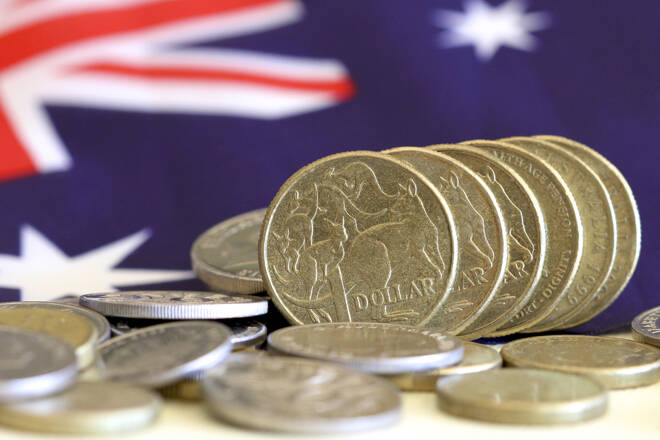Advertisement
Advertisement
AUD/USD and NZD/USD Fundamental Daily Forecast – Pressured as Fed Rates Hikes Outpace RBA, RBNZ Increases
By:
With next month's RBA and RBNZ rate hikes expected to come in below the Fed’s hike, the pressure will remain on the AUD/USD and NZD/USD.
The Australian and New Zealand Dollars closed lower on Friday as domestic bonds suffered big losses as investors scrambled to catch up with the U.S. Federal Reserve’s interest rate outlook. The two currencies were beat up badly throughout the week after several major central banks, including the Fed and the Bank of England, hiked their benchmark rates, pressuring commodity prices and demand for higher-risk equities.
On Friday, the AUD/USD settled at .6536, down 0.0080 or -1.23% and the NZD/USD finished at .5745, down 0.0083 or -1.44%. Additionally, the Invesco CurrencyShares Australian Dollar Trust ETF (FXA) closed at $64.68, down $1.12 or -1.70%.
Aussie, Kiwi Getting Hit from All Sides
The weakness in the Aussie and Kiwi late in the week was fueled by Fed members’ projections for aggressive rate hikes and persistently high rates over the next year or so. The forecasts that were released after an aggressive 75 basis point by the U.S. central bank, unleashed another round of greenback buying that put other assets on the run.
As a result, crude oil plunged as rate hikes raised global recession and related demand concerns. Gold, which pays no income to hold it, also suffered as rising U.S. Treasury yields reduced its investment appeal. This put added pressure on the commodity-linked Aussie and Kiwi.
Tightening Government Debt Yields Weigh on Aussie, Kiwi
Rising U.S. Treasury yields also put upward pressure on Australian and New Zealand Government debt yields, driving their respective bond prices lower. The spread between the U.S. Government debt yields and that of Australia and New Zealand also tightened, further weakening demand for the Australian and New Zealand Dollar.
U.S. Treasury yields climbed on Friday and the yield on the 2-year Treasury note notched a new 15-year high as markets assessed the Federal Reserve’s latest rate hike and what it means for the economy going forward. Meanwhile, the yield on the 10-year hit an 11-year high of 3.829%.
The climb in yields came as markets weighed the implications of the Federal Reserve’s latest policy decisions as it signals its willingness to accept a recession ahead if it means an end to surging inflation.
Looking Ahead…
The Fed lifted rates by an expected 75 basis points last Wednesday and signaled a longer trajectory for policy rates than markets had price in.
Now it’s the Reserve Bank of Australia (RBA) and the Reserve Bank of New Zealand’s (RBNZ) turn to raise rates next month.
The problem is Australia and New Zealand have different levels of inflation so their respective central banks can’t raise rates as much as the U.S. Federal Reserve without risking tremendous damage to their economies.
The markets have largely priced in 50 basis point rate hikes in October with 25 basis points in November and December for the RBA and RBNZ. With these rate hikes expected to come in below the Fed’s hike, the pressure will remain on the AUD/USD and NZD/USD.
For a look at all of today’s economic events, check out our economic calendar.
About the Author
James Hyerczykauthor
James Hyerczyk is a U.S. based seasoned technical analyst and educator with over 40 years of experience in market analysis and trading, specializing in chart patterns and price movement. He is the author of two books on technical analysis and has a background in both futures and stock markets.
Advertisement
